36. Learn what to do when you find a baby bird.
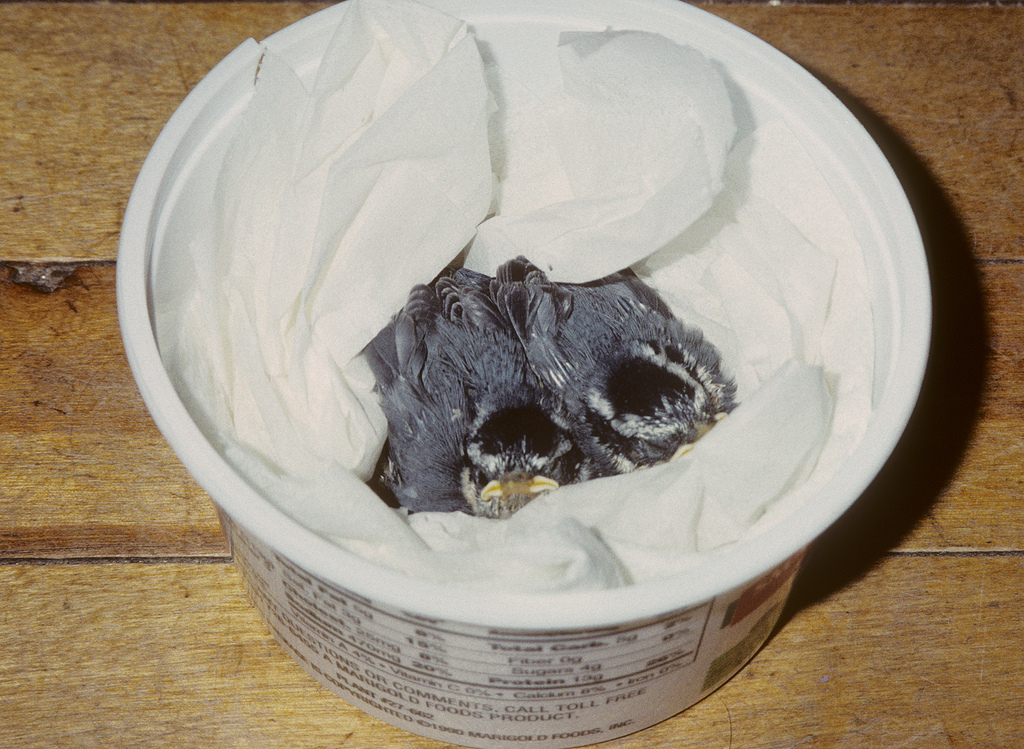
Find a rehabber via Animal Help Now.
Find a rehabber via the National Wildlife Rehabilitators Association
Find a rehabber via the Wildlife Rehabilitation Information Directory
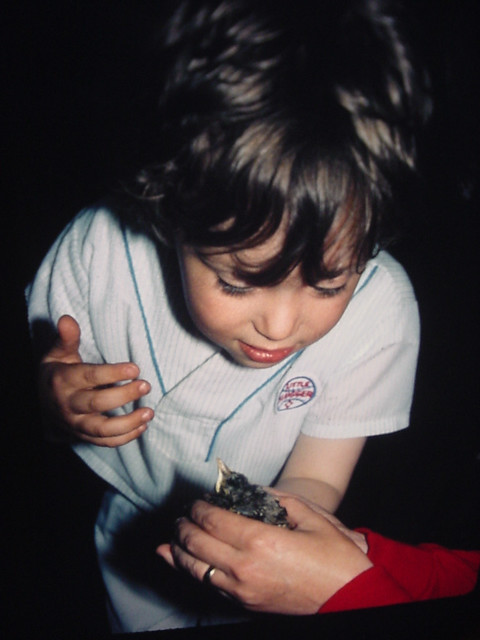
Every summer I get at least a hundred calls from people who have found baby birds and want to know what to do. Many people are afraid to pick up baby birds for fear that the mother will detect the scent of human hands and no longer take care of them. Although recent research indicates that many birds have a better sense of smell than ornithologists once believed, birds identify their babies pretty much the way we humans do—by sight and sound, not odor. So if you pick up a fallen nestling, you can restore it to its nest without fear that the parents will reject it.
Many of us have a powerful instinct to bond with small, helpless creatures, and sometimes a person who has every intention of bringing a baby bird to a rehabber ends up trying to raise it. But possessing any wild bird violates state and federal laws. In the case of baby birds raised by well-meaning but inexperienced people, these birds have a much poorer chance of survival and a poorer quality of life if they do survive.

Most baby birds fall into two categories, precocial and altricial. Precocial birds, such as ducklings, shorebirds, and barnyard chicks, hatch covered with soft down, open their eyes within minutes or hours, and quickly leave the nest, following their mother to food. Parent birds may hold food up to the mouths of precocial chicks, or they may tap at food to show the babies what is edible, but the babies don’t open their mouths wide to beg, as robins and jays do.
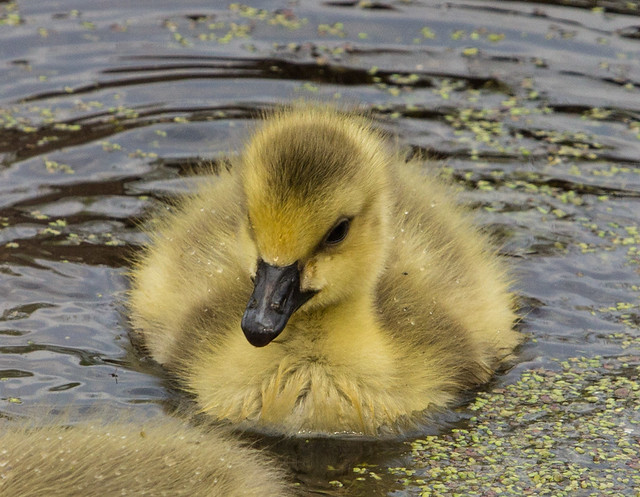
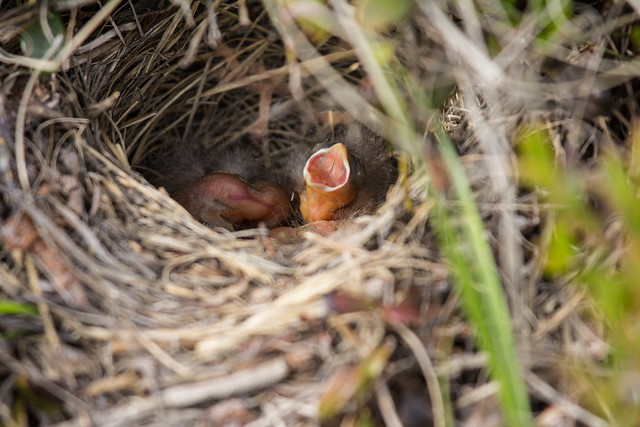
Precocial chicks must learn very quickly upon hatching how to survive, so these species imprint, usually on the first moving, vocalizing thing they see, which is virtually always their mother. If an imprinted baby bird is separated from its family, it will have trouble adapting to feeding without its mother and siblings nearby. Fortunately, an imprinted chick can often be released in the vicinity of another mother and same-size chicks of its species and successfully join that family. If you find a wild duckling, killdeer, or other fuzzy chick, get it to a rehabber, or release it near its own or a potential foster mother as quickly as possible. On rare occasions, one precocial chick hatches after the others have already left the nest. In this case, since the wild chick hasn’t seen its mother, it may imprint on a person picking it up. Chicks imprinted on humans, especially shorebirds, may starve to death because they feed, by instinct, on food items presented by their mother, using subtle clues that we simply can’t match. Imprinted chicks are adorable, and it is heartbreaking to watch them die, but that nearly always happens if an untrained person tries to raise them.
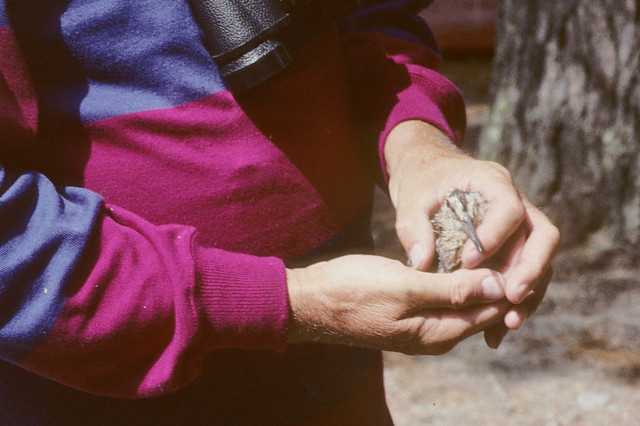
Altricial chicks undergo two stages of development—nestling and fledgling. If a nestling falls from a nest, it can be put back without risk. Fledglings can be placed back in the nest, but like human toddlers, they’ll hop right back out. You can recognize altricial nestlings because they have a lot of bare skin and cannot hop at all. They sometimes fall out of nests in high winds or storms or are plucked from a nest by a crow or jay and dropped when mobbed by the parents or other birds. Parely, a nestling may restlessly wiggle out of the nest when it’s infested with lice or mites. If you can return a nestling to its own nest, do so. The parents will not reject a baby that has been touched by human hands. If you can return it to the nest or if the tree has been destroyed and can’t be repaired, get the bird to a rehabber as soon as possible.
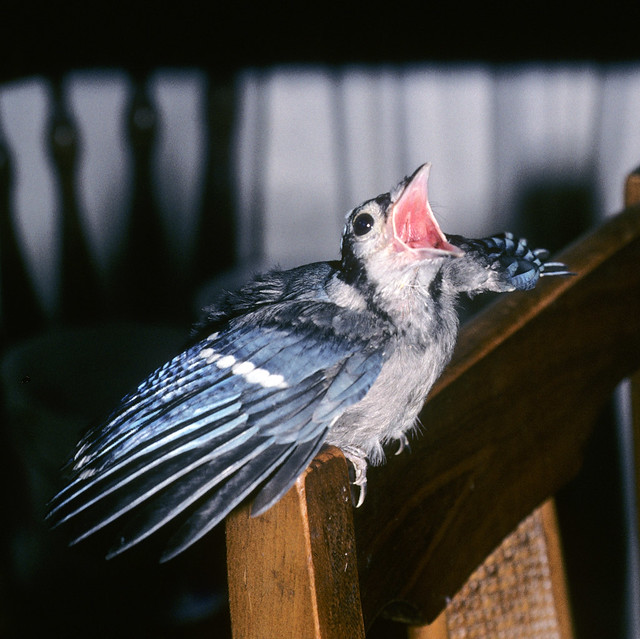
Altricial fledglings can hop or walk. Cavity-nesting fledglings such as woodpeckers and swallows can fly fairly well from the time they emerge from the nest, but many fledglings cannot fly for several days or more. These are the birds that people most often mistake as abandoned. Sadly, the vast majority of fledglings “rescued” by people were actually being properly cared for by their parents when the well-meaning person intervened. When a nestful of babies fledge, each little bird hops or flits about, exploring the world and periodically making sounds that attract its parents to feed it. The parents can’t be with all the fledglings at the same time—keeping a whole brood of nestlings together would be like trying to keep four or five toddlers together in a toy store. So please don’t assume that a baby bird hopping around alone is an orphan or has been abandoned. Within a couple of days of leaving the nest, most fledglings in a family band together and retreat to a more secluded area.
If you’re worried about children, cat attacks, or other dangers facing a fledgling in the open, pick it up and carry it to a nearby tree or shrub. The parents will certainly be able to find it. Taking a fledgling from its parents is cruel to both the bereft parents and the baby, whose best chance of survival is to be raised and educated by its parents.
Never feed any baby bird crackers, bread, or milk. The most nutritious diet to feed an altricial chick until you can get it to a rehabber is a commercial hand-feeding mixture for baby birds that you can purchase at a pet shop. Kaytee Exact Handfeeding Diet, a powdered mix, provides a reasonably good diet for the short term. This is not a complete diet for most wild birds, however, and should be supplemented with other food items appropriate for the species. For example, most songbirds require mealworms or other insects, and robins and waxwings are also fed some fruits. Feed nestlings every fifteen to thirty minutes, as much as they can comfortably eat, during daylight hours. If you must take a break for up to a couple of hours once or twice a day, that’s okay, but to parent bird, raising their babies is a full-time job, and if you are assuming that responsibility, you should do it properly.
Most nestlings defecate as soon as they swallow. In the wild, this ensures that the parent will still be at the nest to clean up. Most nestlings eliminate these wastes via fecal sac—the feces and urine are encased in a strong membrane that can be carrie doff by the parents and disposed of elsewhere. If a nestling’s droppings are slimy or messy, this is evidence that it is sick or that the diet lacks important elements.

Confining a fledgling to a boat or cage, or even a whole house, is like keeping a human toddler in a crib. This is a critical stage in a young bird’s development, when it learns proper coordination and many of the skills that will keep it alive. If you don’t know how to teach a baby bird to survive in the wild, you do it a terrible injury by keeping it. In some cases, such as with swallows, a fledgling remains with its parents through its first migration. Parents teach their offspring feeding and survival strategies and the migration route. Without its own or foster parents, such a fledgling has little chance of surviving.
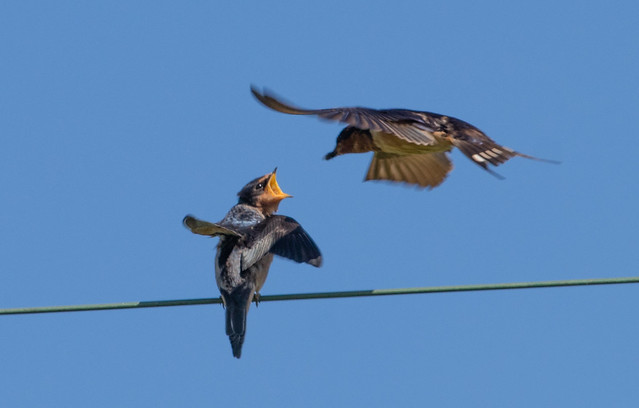
Baby robins remain remain with their father for weeks after fledging, and baby jays normally remain with their parents for months. Without parents to teach them basic survival strategies, they have a much poorer chance of making it on their own. So do your best to get any baby bird to a licensed rehabilitator with the necessary expertise and facilities. Many rehabbers use “foster parent” birds to teach their fledglings the necessary survival skills.
Remember, it is illegal to keep any native American bird, and many nonnative species, as a pet. You won’t be arrested or fined if you rescue a bird and do what’s necessary to keep it alive until you find a licensed rehabilitator. If you feel genuine compassion for a wild creature, you have a moral as well as a legal responsibility to give it a chance at a long, healthy life in the wild.
From 101 Ways to Help Birds, published by Stackpole in 2006. Please consider buying the book to show that there is a market for bird conservation books. (Photos, links, and updated information at the end of some entries are not from the book.)